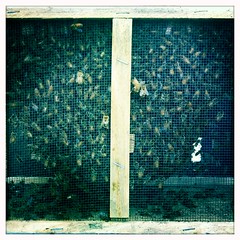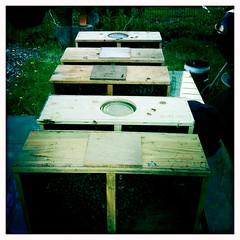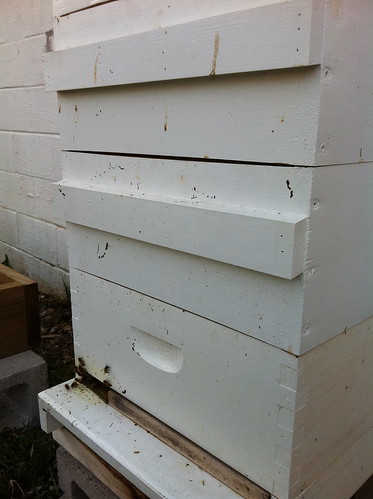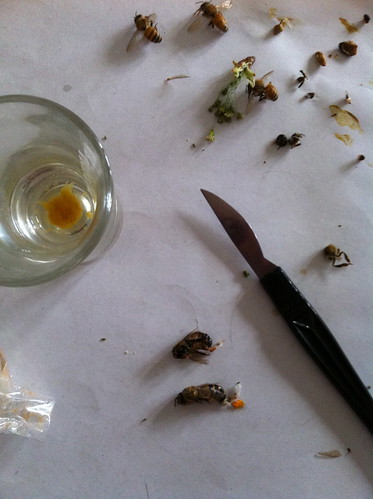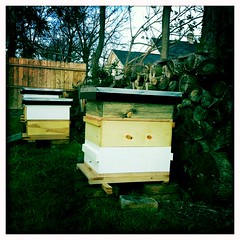
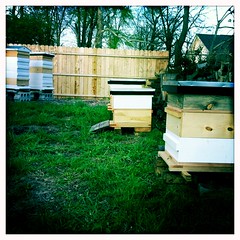
With the gracious help of Brian Ronk I collected our first swarm of bees for the season! Brian and I climbed to the top of a two story house, and then I climbed up another twelve foot of extension ladder, leaning from the top of the roof up to the uppermost branches of a pine tree, to collect the large swarm of bees.
They have been added to the 5th Street Apiary and seem to have settled in despite the rainy weather. Hopefully Brian was able to get some good video and maybe we can get a link up.
If you see a swarm give me a call, 312.2122, and I will do my best to collect them. Swarms do not have a great chance of surviving if left on their own and they may end up somewhere they are not wanted and be subjected to a can of wasp killer. Not a good outcome. Your reward is a free jar of honey!
UPDATE: Once the hive was settled in, we found (or rather didn't find) something unsettling. The queen didn't make it with the rest of the bees. Ug. Fortunately, we'd made a split from Columbia last time we inspected her because we'd found capped and uncapped queen cells*. When no queen was evident in the swarm (you can tell because they don't act settled like they do when they're queenright), Grant combined the split nucleus we'd made from our booming hive (replete with a number of queen cells. He inspected again yesterday afternoon and found a small queen had emerged!
* This time of year, when you see a hive building queen cells, it likely means they want to swarm. Swarming is really just a hive--as an organism--reproducing itself and we'll probably need to dedicate a whole post to that process. However, it is important to know that swarms are quite docile because they don't have anything to defend. Anyway, so the workers need to make a new queen so the old one can go with the swarm, so they do so by making queen cells. You, as a beekeeper, may try to prevent this by making a split. More on all that later.
They have been added to the 5th Street Apiary and seem to have settled in despite the rainy weather. Hopefully Brian was able to get some good video and maybe we can get a link up.
If you see a swarm give me a call, 312.2122, and I will do my best to collect them. Swarms do not have a great chance of surviving if left on their own and they may end up somewhere they are not wanted and be subjected to a can of wasp killer. Not a good outcome. Your reward is a free jar of honey!
UPDATE: Once the hive was settled in, we found (or rather didn't find) something unsettling. The queen didn't make it with the rest of the bees. Ug. Fortunately, we'd made a split from Columbia last time we inspected her because we'd found capped and uncapped queen cells*. When no queen was evident in the swarm (you can tell because they don't act settled like they do when they're queenright), Grant combined the split nucleus we'd made from our booming hive (replete with a number of queen cells. He inspected again yesterday afternoon and found a small queen had emerged!
* This time of year, when you see a hive building queen cells, it likely means they want to swarm. Swarming is really just a hive--as an organism--reproducing itself and we'll probably need to dedicate a whole post to that process. However, it is important to know that swarms are quite docile because they don't have anything to defend. Anyway, so the workers need to make a new queen so the old one can go with the swarm, so they do so by making queen cells. You, as a beekeeper, may try to prevent this by making a split. More on all that later.

